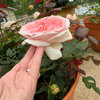RRD and Easy Does It
lainey2 VA
9 years ago
Related Stories

INSIDE HOUZZHow Much Does a Remodel Cost, and How Long Does It Take?
The 2016 Houzz & Home survey asked 120,000 Houzzers about their renovation projects. Here’s what they said
Full Story
FUN HOUZZ10 Truly Irritating Things Your Partner Does in the Kitchen
Dirty dishes, food scraps in the sink — will the madness ever stop?
Full Story
MOST POPULARWhen Does a House Become a Home?
Getting settled can take more than arranging all your stuff. Discover how to make a real connection with where you live
Full Story
REMODELING GUIDESBathroom Workbook: How Much Does a Bathroom Remodel Cost?
Learn what features to expect for $3,000 to $100,000-plus, to help you plan your bathroom remodel
Full Story
LIFEHouzz Call: What Does Summer Look Like at Your Home?
Kids, water, sunshine, backyards, cold drinks — share photos of what summer at home means to you
Full Story
KITCHEN DESIGNHow Much Does a Kitchen Makeover Cost?
See what upgrades you can expect in 3 budget ranges, from basic swap-outs to full-on overhauls
Full Story
FEEL-GOOD HOMEDoes Your Home Make You Happy?
How to design an interior that speaks to your heart as well as your eyes
Full Story
HOUSEKEEPINGThe Quick and Easy Way to Clean a Microwave
All you need is water and a couple of other natural ingredients to get your appliance sparkling and smelling fresh again
Full Story
CRAFTSDIY: Easy Outdoor Cushions
Accessorize your outdoor area in a jiffy with these simple and versatile cushions
Full Story
CHRISTMASQuick and Easy Christmas Decor With Greens, Wreaths and Pine Cones
When you're short on time, focus on the basics to make your house festive and fragrant
Full Story









dublinbay z6 (KS)
anntn6b
Related Professionals
Maple Valley Landscape Architects & Landscape Designers · Carson Landscape Architects & Landscape Designers · Eden Prairie Landscape Architects & Landscape Designers · Elwood Landscape Architects & Landscape Designers · Hartford Landscape Contractors · Boca Raton Landscape Contractors · Cordele Landscape Contractors · Estelle Landscape Contractors · Madera Landscape Contractors · Palatine Landscape Contractors · Pine Hills Landscape Contractors · Shirley Landscape Contractors · Wells Landscape Contractors · Weslaco Landscape Contractors · Raytown Landscape Contractorsbuford
lainey2 VAOriginal Author